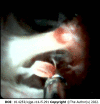Endobiliary biopsy
- PMID: 35719901
- PMCID: PMC9157693
- DOI: 10.4253/wjge.v14.i5.291
Endobiliary biopsy
Abstract
The differential diagnosis between benign and malignant biliary strictures is challenging and requires a multidisciplinary approach with the use of serum biomarkers, imaging techniques, and several modalities of endoscopic or percutaneous tissue sampling. The diagnosis of biliary strictures consists of laboratory markers, and invasive and non-invasive imaging examinations such as computed tomography (CT), contrast-enhanced magnetic resonance cholangiopancreatography, and endoscopic ultrasonography (EUS). Nevertheless, invasive imaging modalities combined with tissue sampling are usually required to confirm the diagnosis of suspected malignant biliary strictures, while pathological diagnosis is mandatory to decide the optimal therapeutic strategy. Although EUS-guided fine-needle aspiration biopsy is currently the standard procedure for tissue sampling of solid pancreatic mass lesions, its diagnostic value in intraductal infiltrating type of cholangiocarcinoma remains limited. Moreover, the "endobiliary approach" using novel slim biopsy forceps, transpapillary and percutaneous cholangioscopy, and intraductal ultrasound-guided biopsy, is gaining ground on traditional endoscopic retrograde cholangiopancreatography and percutaneous transhepatic cholangiography endobiliary forceps biopsy. This review focuses on the available endobiliary techniques currently used to perform biliary strictures biopsy, comparing the diagnostic performance of endoscopic and percutaneous approaches.
Keywords: Biliary strictures; Cholangioscopy; Endobiliary forceps biopsy; Endoscopic retrograde cholangiography; Intraductal ultrasound-guided biopsy; Percutaneous transhepatic.
©The Author(s) 2022. Published by Baishideng Publishing Group Inc. All rights reserved.
Conflict of interest statement
Conflict-of-interest statement: All the authors are aware of the content of the manuscript and have no conflict of interest.
Figures



References
-
- Gerhards MF, Vos P, van Gulik TM, Rauws EA, Bosma A, Gouma DJ. Incidence of benign lesions in patients resected for suspicious hilar obstruction. Br J Surg. 2001;88:48–51. - PubMed
-
- Hewitt MJ, McPhail MJ, Possamai L, Dhar A, Vlavianos P, Monahan KJ. EUS-guided FNA for diagnosis of solid pancreatic neoplasms: a meta-analysis. Gastrointest Endosc. 2012;75:319–331. - PubMed
-
- Kimura H, Matsubayashi H, Sasaki K, Ito H, Hirosawa K, Uesaka K, Kanemoto H, Ono H. Factors affecting the yield of endoscopic transpapillary bile duct biopsy for the diagnosis of pancreatic head cancer. Pancreatology. 2013;13:524–529. - PubMed
Publication types
LinkOut - more resources
Full Text Sources
Research Materials

